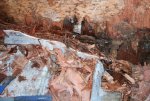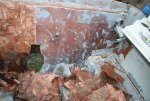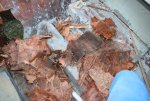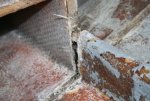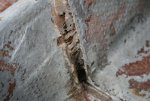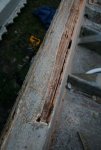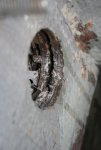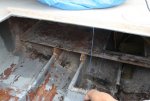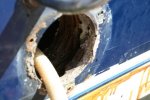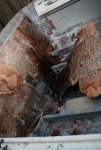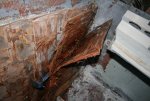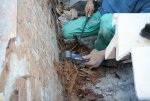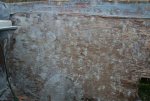Hey guys,
I drilled holes on the inside of the transom and out pours water with wet wood stuck on the bit. Not only in one spot but from bottom to half way up the transom. The rot coincided with the dark fiberglass which was also half way up the transom.
I keep getting deeper and deeper into this thing. Every time I hit a bump in the restore process I take care of it and move on. Today I found a rotten stringer and that led me to the transom. Anyhow...
I have heard of great success stories using seacast. After reading the transomrepair.com site I used their excel calculator. It said I need 19 GALLONS to fill !! In their store, thats 850 bucks WITHOUT shipping the 144 pound package!!! DAM...gimme a minute, I need to reprofuse my brain.
!! In their store, thats 850 bucks WITHOUT shipping the 144 pound package!!! DAM...gimme a minute, I need to reprofuse my brain.
So, my questions are:
1 - Should I or should I not use the SEACAST?
2 - What are the chances of not removing the inner glass and just slip in sealed wood to shape?
3 - Or should the inner skin be cutout then pub the wood then re-glass?
It seems to be about 1.5 to 1.75 inches thick.
What a bummer this is, I need some motivation.
I drilled holes on the inside of the transom and out pours water with wet wood stuck on the bit. Not only in one spot but from bottom to half way up the transom. The rot coincided with the dark fiberglass which was also half way up the transom.
I keep getting deeper and deeper into this thing. Every time I hit a bump in the restore process I take care of it and move on. Today I found a rotten stringer and that led me to the transom. Anyhow...
I have heard of great success stories using seacast. After reading the transomrepair.com site I used their excel calculator. It said I need 19 GALLONS to fill
So, my questions are:
1 - Should I or should I not use the SEACAST?
2 - What are the chances of not removing the inner glass and just slip in sealed wood to shape?
3 - Or should the inner skin be cutout then pub the wood then re-glass?
It seems to be about 1.5 to 1.75 inches thick.
What a bummer this is, I need some motivation.





















